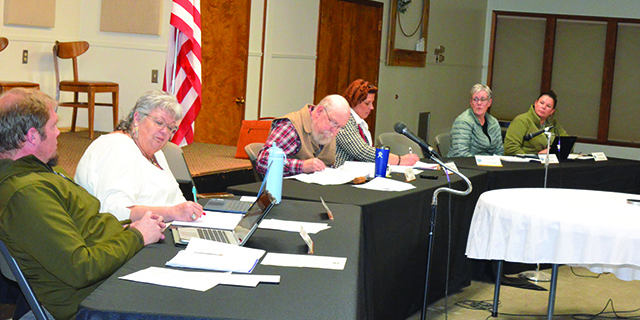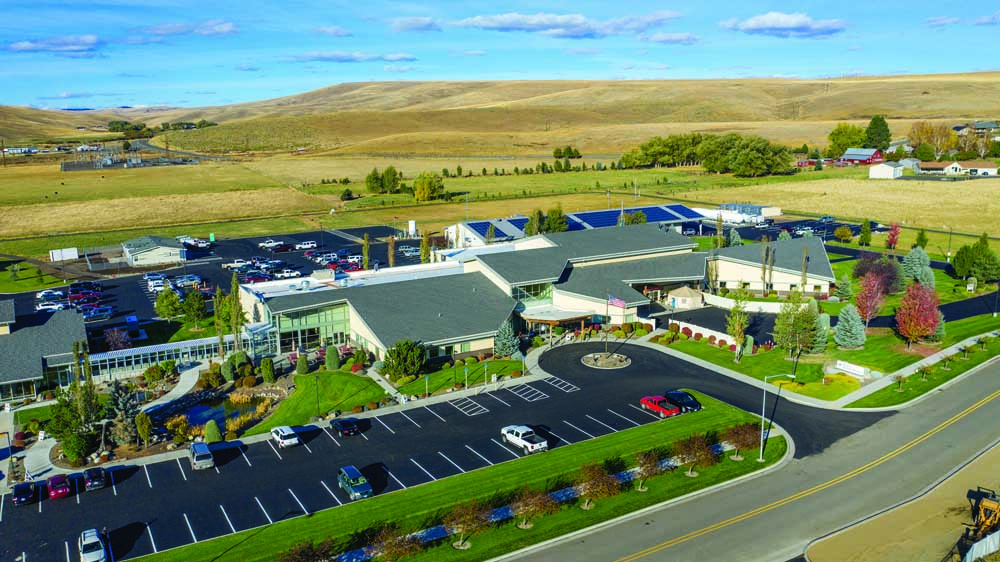National ag census paints picture of EO farms
Published 5:00 pm Wednesday, August 18, 2004
Early this month, the National Agricultural Statistics Service (NASS) of the U.S. Department of Agriculture released the results of the 2002 Census of Agriculture for Oregon and its counties.
This census only comes around once every five years. The Census of Agriculture data for Oregon fill hundreds of pages, so only the highlights are presented here. Anyone wanting a larger serving of these statistics should explore the online data available from the NASS Web site at www.nass.usda.gov/census.
The 2002 Census of Agriculture found 2,128,982 farms in the United States. NASS officially defines a farm as “any place from which $1,000 or more of agricultural products were produced and sold, or normally would have been sold, during the reference year.”
Nationally, the number of farms in 2002 was down 3.9 percent from that recorded in 1997. The acreage devoted to farming was down 1.7 percent. Oregon had 40,033 farms in 2002.
Our state accounts for 2 percent of America’s farms as well as 2 percent of this country’s farmland. Wallowa County totaled 503 farms; the only Eastern Oregon county with less was Grant, at 394. Union County sported 933 farms, while Baker County has 703.
Size exceeds US, Oregon average
Farm sizes in all six Eastern Oregon counties exceed state and national averages, sometimes by large amounts, which were 427 and 441 acres, respectively. Wallowa County stood at a 1,030 acre average, with Baker at 1,237 and Union at 482. Harney County averaged 3,006 acres per farm, as it takes many more acres of semi-arid rangeland to support a viable ranching enterprise, for example, than the acreage required for, say, a carefully cultivated vineyard feeding some boutique winery.
Harney and Malheur counties each hold more than 1 million acres of farmland. In fact, Harney County’s 1,575,020 acres of farms and ranches were more than any other county in the state in 2002, a ranking befitting the state’s largest county. Harney County’s average farm size of more than 3,000 acres ranked third in Oregon, behind Wheeler and Gilliam counties.
As a region, Baker, Grant, Harney, Malheur, Union and Wallowa counties account for nearly one-third of Oregon’s farmland and 11 percent of Oregon’s agricultural operations. By contrast, these six counties generate only 2 percent of Oregon’s nonfarm employment.
Graying of Oregon’s farmers
Census of Agriculture data also tell us a thing or two about the people who run these farms. The average age of farm operators is a statistic that has been collected in the agriculture census for quite some time. In Eastern Oregon, it’s 54.9 years of age. Wallowa County’s a tad higher, at 55.5 years old. Comparing that to data collected in 1969 – when the average age of a farm operator was about 51 – the average farmer or rancher today is about four years older than his or her parents’ generation.
A farm – for statistical purposes – is any enterprise selling at least $1,000 worth of agricultural products, so there are plenty of people who technically qualify as farmers but aren’t necessarily farming for a living. About 54 percent of Oregon’s farm operators identified farming as their main line of work in 2002.
That’s a change from 1997, when fewer than half of Oregon’s farmers considered farming their primary occupation.
In Union County, that’s still the case – only 48 percent of farm operators said farming was their primary job. However, in each of the other five regional counties, the share of farm operators whose primary occupation was farming was greater than state and national averages. In Wallowa County, that figure stands at 59.8 percent.
Acreage versus value
While Eastern Oregon’s farms are larger than average, a lot of land doesn’t always translate into high production. Except for Malheur County, agricultural sales per farm in this region were less than state and national averages. With production value per farm of $182,134, Malheur County ranked third in Oregon, trailing the dairy counties of Morrow and Tillamook.
Oregon’s average was $79,822, while market value of products per farm in Wallowa County averaged to $41,303, the lowest in Eastern Oregon. In Union County the average stood at $48,352 and Baker County averaged $67,453.
Ever-rising production expenses have been a headache for farmers and ranchers for years. If crop and livestock sales, government payments and other farm-related income don’t meet or exceed production expenses, there’s no profit. Fewer than half of the farms in the U.S., Oregon and Eastern Oregon were profitable in 2002.
In Grant County, fewer than one-quarter made money, with Wallowa County edging the state average of 36 percent with a 38 percent mark. Across Oregon, only three counties – Gilliam, Sherman and Tillamook – had more profitable farms than unprofitable ones.
Finally, here are a couple of noteworthy odds and ends mined from the 2002 Census of Agriculture. There are 3,078 counties across the United States. Not one of those 3,000-plus counties devoted more acreage to dry onions than did Oregon’s own Malheur County. And for mint oil acreage, Union County ranked third nationally.
Jason Yohannan is the Eastern Oregon regional economist for the Oregon Employment Department.





